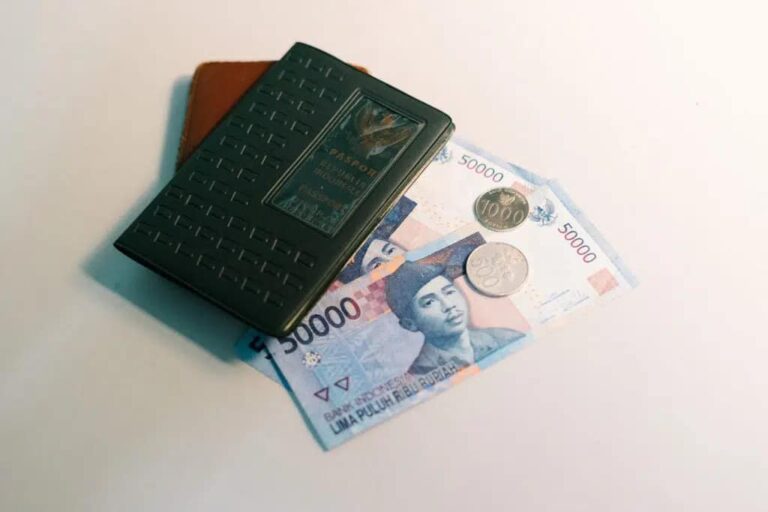Indonesia is a vibrant country with stunning landscapes, rich culture, and a growing economy. Whether you’re planning a trip or sending money to family and friends there, understanding the Indonesian rupiah (IDR) is essential.
Here’s everything you need to know about Indonesia’s currency, including its denominations, history, and tips for managing money effectively.
What Is the Name for Indonesian Money?
The Indonesian rupiah (IDR) is the country’s official currency, symbolised as Rp. Prices are typically displayed with the Rp symbol before the amount, such as Rp20,000.
The Central Bank of Indonesia issues and manages the currency, as well as setting interest rates to influence the economy.
Rupiah Banknotes and Coins: A Closer Look
Banknotes
Indonesian banknotes come in the following denominations:
- Rp1,000
- Rp2,000
- Rp5,000
- Rp10,000
- Rp20,000
- Rp50,000
- Rp75,000 (commemorative note issued in 2020)
- Rp100,000
Banknotes vary in size and colour, making them easy to identify.
Coins
Indonesian coins are available in these denominations:
- Rp25
- Rp50
- Rp100
- Rp200
- Rp500
- Rp1,000
Due to the low value of the rupiah, coins and smaller banknotes (e.g., Rp1,000) are typically used for small transactions, such as parking fees or snacks.
A Brief History of the Indonesian Rupiah
The name “rupiah” comes from the Sanskrit word “rupyakam,” meaning silver. Indonesia introduced the rupiah in 1946 to replace the Dutch East Indies guilder.
Key Milestones:
- 1950: The rupiah became the sole official currency after Indonesia gained independence.
- 1965: A revaluation made 1 new rupiah equal to 1,000 old rupiah to address inflation.
- 1999: Following the Asian financial crisis, the rupiah moved to a free-floating exchange rate.
Five Interesting Facts About the Indonesian Rupiah
1. Colourful Banknotes Reflect Their Value
- Smaller denominations (e.g., Rp1,000 and Rp2,000) are grey or pale, while higher-value notes (e.g., Rp50,000 and Rp100,000) are bright blue and red.
2. Fancy Security Features
Indonesian banknotes have advanced security measures, including watermarks, tactile features for the visually impaired, holograms, and iridescent stripes.
3. A Special Commemorative Note
The Rp75,000 note was issued to celebrate Indonesia’s 75th Independence Day. It features the first president, Soekarno, and vice president, Muhammad Hatta.
4. High Denominations Are Common
Due to inflation, most transactions involve large numbers. For instance, a mid-range meal in Jakarta may cost Rp50,000 (£2.50).
5. Coins Are Rarely Used
Although coins remain legal tender, their low value means they are rarely seen in circulation.
Understanding Indonesian Rupiah Exchange Rates
The value of the rupiah compared to other currencies fluctuates based on the global and Indonesian economies. As of June 2024, here are approximate exchange rates for popular currencies:
- 1 GBP ≈ Rp19,500
- 1 EUR ≈ Rp16,900
- 1 USD ≈ Rp15,560
Use a reliable online currency converter or money transfer app to get real-time rates.
Tips for Exchanging Currency in Indonesia
- Avoid Airports: Currency exchange desks at airports often charge higher fees.
- Use Banks or ATMs: Banks typically offer competitive rates, and ATMs allow you to withdraw local currency directly.
- Carry Small Notes: Many vendors, especially street sellers, may not have change for high denominations.
Sending Money to Indonesia
Sending money to Indonesia is simple with services like Remitly. With fast, secure transfers and competitive rates, you can send GBP to IDR for cash pickup, bank deposits, or mobile wallets.
